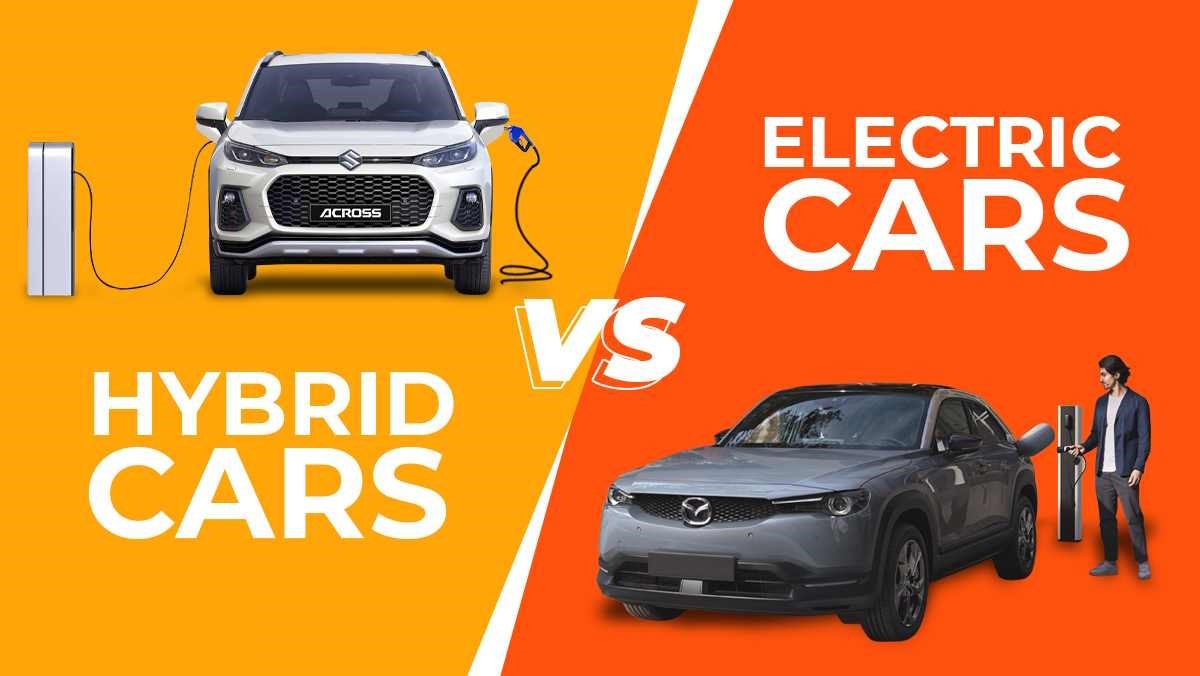Sales of hybrid vehicles skyrocket as buyers ignore EVs

Hybrids have a reputation for being stodgy fuel hogs, but automakers have spent years trying to change that by giving them more athletic looks and power. This once-unpopular hybrid is now everyone’s favorite vehicle.
A modest but consistent portion of the U.S. car industry has been devoted to hybrids since the introduction of the technology by Toyota Prius over twenty years ago. Hybrids enhance fuel efficiency by combining a gas engine with a battery-propelled motor. As numerous EVs were developed by manufacturers to compete with Tesla in the past few years, they have been pushed to the sidelines.
But, in an effort to conform to stricter regulations on exhaust emissions, several automakers have been steadily increasing the number of hybrid vehicles they sell. This strategy has paid off for some. For instance, in the United States, hybrid versions of practically every gas-powered model are available from Toyota Motor, the market leader in hybrid technology. The new Camry sedan and Sienna minivan from Toyota are two examples of vehicles that are hybrid-only.
Cox Automotive predicts that by the 2024 model year, there will be over 70 hybrid vehicles available for purchase in the United States, an increase of 40% over the previous five years. There is a wider range of hybrid options available now than in previous years, including larger SUVs, pickup trucks, jeeps, and even sports cars.
According to Andrew Frick, who heads Ford Motor Company’s gas and hybrid car operations, hybrids now have minimal drawbacks when compared to gas alternatives. For instance, the hybrid F-150 pickup from Ford now outperforms the majority of its gas-powered counterparts.
In the first half of the year, sales of hybrids in the United States increased by half. In terms of growth and volume, that leap was more impressive than the 13% increase in EV sales. Edmunds, a research site, found that hybrids sold off dealer lots in 25 days on average, which is twice as quick as gas-powered automobiles and nearly three times faster than electric vehicles.
A lot of people are curious because of all the talk about electric cars. Dealers and auto executives report that some EV-curious consumers are hesitating to go totally electric and are opting instead to drive away in hybrids. The surge in demand is occurring at a period when gas prices are relatively moderate and despite relatively low marketing spending in comparison to electric vehicles.
El Monte, California’s Doug Eroh, president of Longo Toyota, thinks EVs have a halo effect. Driving range and charger availability are two of the most common customer concerns when inquiring about electric vehicles, according to Eroh.
The advent of numerous plug-in versions by Volvo Cars, BMW, Hyundai Motor, Kia, and Jeep, which is owned by Stellantis, is another element driving sales of hybrids. The electric motor powers a plug-in hybrid for around 20–40 miles before switching to the gas engine.
Despite Wall Street’s enthusiastic support for electric vehicles (EVs), several car CEOs downplayed or completely abandoned their hybrid offers in favor of investing substantially in purely electric versions for a long time.
Others are trying to catch up. In North America, GM will launch a few plug-in hybrid vehicles after previously ignoring hybrids in lieu of an aggressive electric-car push. Nissan Motor is looking into options for importing its hybrid vehicles sold in other countries to the United States.
The head of Volkswagen North America, Pablo Di Si, has stated that the company is considering expanding its U.S. lineup to include a plug-in hybrid.
Toyota, which has been chastised by eco-lobbyists for clinging to gas-electric technology, stands to gain from the revival of hybrid demand. According to the Japanese automaker, many customers don’t find EVs feasible, and hybrids are better for reducing carbon emissions.
A number of famous people, including Natalie Portman and Leonardo DiCaprio, who were concerned about the environment were early Toyota customers. According to dealers, hybrid sales kept going up because people saw them as eco-friendly vehicles.
Toyota intended to alter that impression. In an effort to improve the aesthetics and performance of its hybrids, it started releasing updated versions of them around 2018. Take the 2022 Prius as an example; it retains about the same fuel economy (57 mpg) as its predecessor but packs 70 more horsepower.
Designers also aimed to make the Prius look sportier, even though it would have less fuel efficiency due to characteristics like bigger tires or a less aerodynamic shape. The Prius’s aesthetic appeal was a major selling point for Toyota, according to Simon Humphries, head of design at Toyota.
Other automakers are also putting a lot of faith in hybrid vehicles. Stellantis Jeep debuted a plug-in hybrid Wrangler in 2021, with ads showing the vehicles navigating muddy rivers in support.
The hybrid Maverick, a small pickup truck introduced by Ford in late 2021, has been in high demand, and the automaker has stated its intention to increase sales of hybrid vehicles by a factor of four in the next five years.
Hybrids’ monetary advantages are simpler to explain to customers than electric vehicles’, according to dealerships and automakers. There are more factors for electric vehicle buyers to think about, such as the price of a home charger, the cost of repairs and maintenance, and the unknown resale value.
At last month’s investor conference, Ford CEO Jim Farley stated that customers do not need to alter their habits on hybrid. “They can figure it out right away.”
You may now get hybrids for less money than you would pay for a gas or diesel vehicle. Based on statistics from private-equity firm Mobility Impact Partners, hybrids had an average sticker price that was around 9% higher than the comparable internal combustion-engine vehicle for the 2024 model year. This was a decrease from a 43% premium in 2007.
Two Ford Maverick hybrid pickups were exchanged for one gasoline car and one SUV by Randall Snider last year. How about we see if we can find the most cost-effective option? Snider, a former resident of Orange County, explained.
The added expense of an electric vehicle wasn’t justified to him, so he discarded the idea. “For the price difference between a Maverick and a Tesla, you might go on two vacations,” he remarked.




